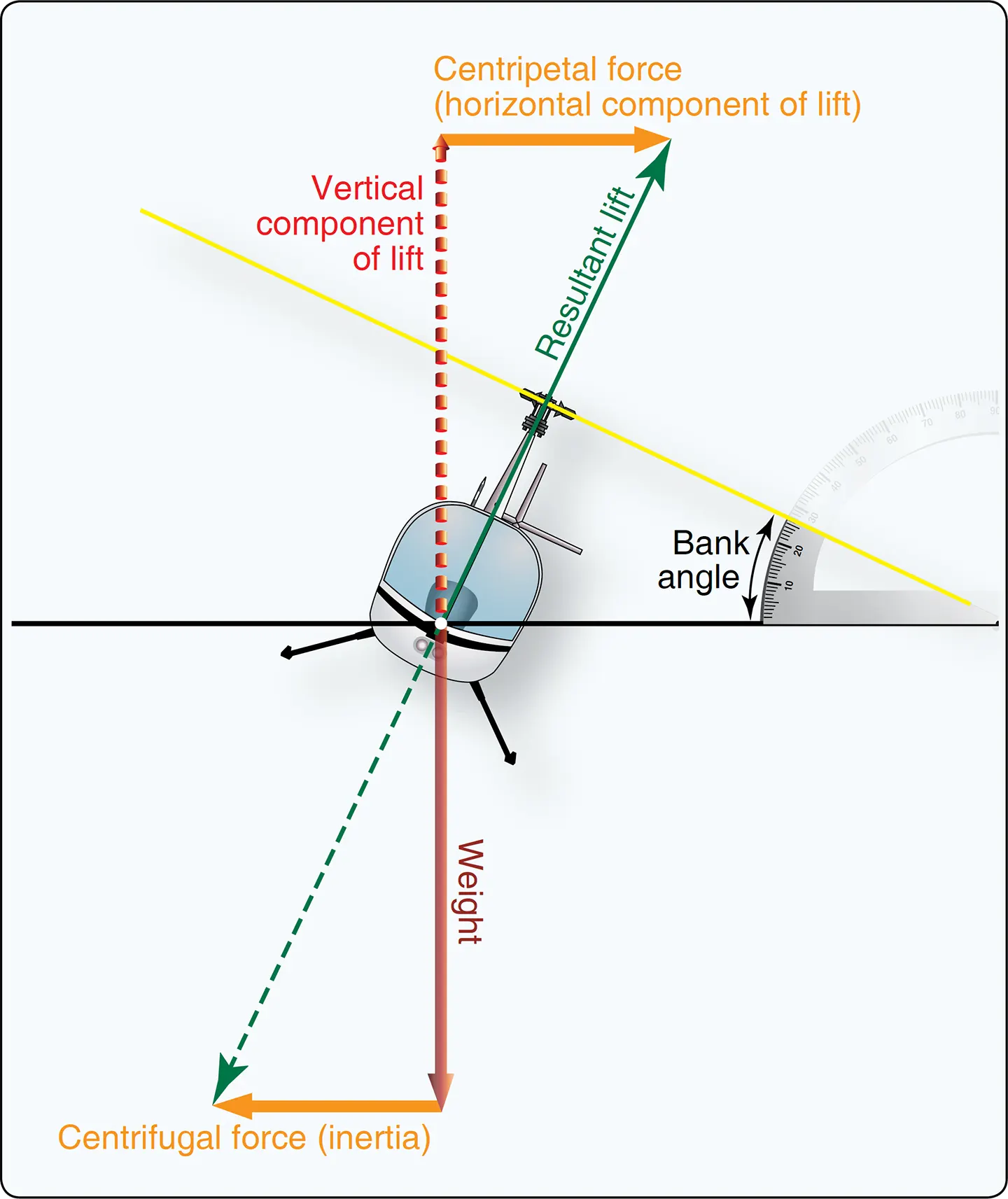Vertical Flight
Hovering is actually an element of vertical flight. Increasing the angle of incidence of the rotor blades (pitch) while keeping their rotation speed constant generates additional lift and the helicopter ascends. Decreasing the pitch causes the helicopter to descend. In a no-wind condition in which lift and thrust are less than weight and drag, the helicopter descends vertically. If lift and thrust are greater than weight and drag, the helicopter ascends vertically. [Figure 1]

Sideward Flight
In sideward flight, the tip-path plane is tilted in the direction that flight is desired. This tilts the total lift-thrust vector sideward. In this case, the vertical or lift component is still straight up and weight straight down, but the horizontal or thrust component now acts sideward with drag acting to the opposite side. [Figure 2]

Sideward flight can be a very unstable condition due to the parasitic drag of the fuselage combined with the lack of horizontal stabilizer for that direction of flight. Increased altitudes help with control and the pilot must always scan in the direction of flight.
Movement of the cyclic in the intended direction of flight causes the helicopter to move, controls the rate of speed, and ground track, but the collective and pedals are key to successful sideward flight. Just as in forward flight, the collective keeps the helicopter from contacting the ground and the pedals help maintain the correct heading; even in sideward flight, the tail of the helicopter should remain behind you. Inputs to the cyclic should be smooth and controlled, and the pilot should always be aware of the tip-path plane in relation to the ground. [Figure 3]

Contacting the ground with the skids during sideward flight will most likely result in a dynamic rollover event before the pilot has a chance to react. Extreme caution should be used when maneuvering the helicopter sideways to avoid such hazards from happening.
Rearward Flight
For rearward flight, the tip-path plane is tilted rearward, which, in turn, tilts the lift-thrust vector rearward. Drag now acts forward with the lift component straight up and weight straight down. [Figure 4]

Pilots must be aware of the hazards of rearward flight. Because of the position of the horizontal stabilizer, the tail end of the helicopter tends to pitch downward in rearward flight, causing the probability of hitting the ground to be greater than in forward flight. Another factor to consider in rearward flight is skid design. Most helicopter skids are not turned upward in the back, and any contact with the ground during rearward flight can put the helicopter in an uncontrollable position leading to tail rotor contact with the ground. Pilots must do a thorough scan of the area before attempting to hover rearward, looking for obstacles and terrain changes. Slower airspeeds can help mitigate risk and maintain a higher-than-normal hover altitude.
Turning Flight
In forward flight, the rotor disk is tilted forward, which also tilts the total lift-thrust force of the rotor disk forward. When the helicopter is banked, the rotor disk is tilted sideward resulting in lift being separated into two components. Lift acting upward and opposing weight is called the vertical component of lift. Lift acting horizontally and opposing inertia (centrifugal force) is the horizontal component of lift (centripetal force). [Figure 5]

As the angle of bank increases, the total lift force is tilted more toward the horizontal, thus causing the rate of turn to increase because more lift is acting horizontally. Since the resultant lifting force acts more horizontally, the effect of lift acting vertically is decreased. To compensate for this decreased vertical lift, the AOA of the rotor blades must be increased in order to maintain altitude. The steeper the angle of bank is, the greater the AOA of the rotor blades required to maintain altitude. Thus, with an increase in bank and a greater AOA, the resultant lifting force increases and the rate of turn is higher. Simply put, collective pitch must be increased in order to maintain altitude and airspeed while turning. Collective pitch controls the angle of incidence and along with other factors, determines the overall AOA in the rotor disk.
